Posts Tagged ‘“Boston personal injury lawyers”’
Snow Plow Accidents Have Killed Two People in Boston Area
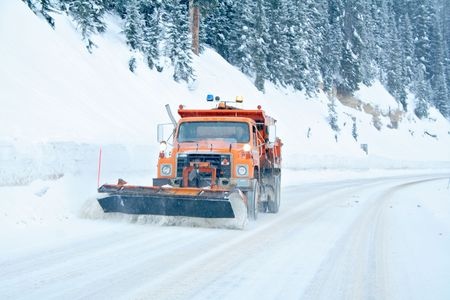 During the past few weeks, snow plows have had little rest in the Boston area and Central Massachusetts. For most of us, they have been part of the background noise of a harsh winter and we have not even noticed them. But as of this week, two pedestrians have died as a result of snow plow crashes in the Boston area. Please be aware of the risks and talk to your family members about how you can stay safe.
During the past few weeks, snow plows have had little rest in the Boston area and Central Massachusetts. For most of us, they have been part of the background noise of a harsh winter and we have not even noticed them. But as of this week, two pedestrians have died as a result of snow plow crashes in the Boston area. Please be aware of the risks and talk to your family members about how you can stay safe.
On Monday afternoon, a 60-year-old employee at a Whole Foods store in Medford was struck and killed while walking across the store’s parking lot. The employee was just leaving work. The area was not open to the public at the time. The snow plow was operated Yerardi Landscape and Design of Medfield, authorities said. The snow plow accident remains under investigation by Medford Police and the Massachusetts State Police.
A week ago, a 57-year-old Weymouth woman was struck and killed by a snow plow driver who was clearing the parking lot outside her condominium complex, Tara Gardens. The driver had just cleared the woman’s parking space for her and a friend told The Boston Globe she had gotten out of her vehicle to ask him not to block her vehicle in as he left. Weymouth Police and the Norfolk County District Attorney’s office are investigating the snow plow death.
We share a few safety tips:
1) Listen to Advisories. Follow the recommendations of state and local officials about when it is best to avoid walking or driving outside.
2) Wear Neon-Colored Vests and Bright Clothing. If you are walking in the street, a neon vest or bright clothing should be a requirement, even during the day. You want snow plow drivers, as well as other drivers, to see you.
Keep a vest in your car. You can use your vest when walking from your car to your destination. It may also come in handy someday if you break down.
3) Do Not Approach Plow Trucks. Pedestrians should never approach plow trucks. Let them stay focused on removing snow.
4) Contact the Property Owner Instead. If you live in an apartment or condo complex, keep the phone number of your building management company handy on your cell phone. If you have a complaint, take a photo to send to the building owner, who can share it with their plow company.
Do the same if you work at a business office, unless you are the owner; then safe snow removal is your responsibility.
5) Expect Plows Everywhere, Even After the Snow Ends. Expect plows everywhere for a while. Even when it is not snowing, expect plows will be out trimming down high snow banks and opening up narrow roads.
6) Do Not Follow Plow Trucks Too Closely. When driving, stay a few car lengths behind plow trucks. The snow plow could hit something hard unexpectedly and not be able to stop. Avoid passing snow plows.
7) If You Have An Accident with a Snow Plow Truck. If you are driving, make sure you stop in a safe place. As you do, take note of what the plow truck looks like and the license plate if you can do so safely. If the plow driver does not stop, immediately notify the local police department to file a car accident report.
Somerville, Cambridge and Boston Are Among the Top U.S. Cities for Bike Commuters, Report Says
The City of Somerville will finish 2014 out front among cyclists. But Cambridge, Boston and Newton are close behind.
The League of American Bicyclists recently recognized Somerville as the Top Bike Commute City in the East. In Somerville, 7.8 percent of people now commute by bike, a larger share than anywhere in the East, including New York City or Philadelphia. In Massachusetts, Cambridge, Boston and Newton also made the Top 20 list.
The League of American Bicyclists’ calculated the figures based on U.S. Census Bureau Statistics, taking into account a city’s population and number of cyclists. The League of American Bicyclists concentrates on counting everyday bike commuters who ride as their primary mode of transportation, not those who only commute a few days a week or those who ride bikes to other transit.
Nationwide, Somerville reported the fifth highest share of bike commuters. Davis, California had the largest share, with 24.5 percent. Boulder, Colorado was second with 11 percent.
In the East, Cambridge came in a close second to Somerville, counting nearly 6.5 percent of residents as bike commuters. Combined, the two neighboring cities have a population of 186,090 and 7,467 bike commuters.
Still Boston is the larger city, with nearly 645,000 residents, and has the highest number of actual bike commuters in the region. It was listed seventh on the American League of Bicyclists’ list, with nearly 2 percent of residents counted as bike commuters. This works out to roughly 6,660 people. Among U.S. cities, Boston is the ninth fastest growing spot for cycling, with commuters up 122 percent from 1990 to 2013.
Cycling is also growing across Massachusetts. The number of people commuting by bike here has increased over 100 percent since 2005, compared to 46 percent for the average U.S. state. We are eager to see what 2015 brings.
Cycle Tracks For Somerville, Cambridge and Boston
We expect to learn a lot more about cycle tracks in 2015. Boston and Cambridge both have cycle tracks, which go a step beyond traditional bike lanes and separate cyclists from traffic with curbing, shrubbery or flexposts. Many bike advocacy groups see these as a critical tool in reducing bike accidents and injuries.
Somerville is planning cycle tracks along Beacon Street, through to the Cambridge border. In recent years, the state Department of Transportation has reported the highest number of bicycle accidents in Massachusetts in this area.
Cambridge was one of the first communities in the country to build a cycle track and now has one on Vassar Street and Concord Avenue from the Alewife Brook Parkway to Blanchard Road. The recent Western Avenue reconstruction project plans also incorporated a cycle track, as well as special bicycle traffic signals.
Boston built cycle tracks on Western Avenue and Commonwealth Avenue. The city’s 5-year action plan calls for the construction of 21 miles of cycle tracks. High priority areas include the streets around the Boston Public Garden, Boylston Street in Back Bay and Malcolm X Boulevard and Massachusetts Avenue in Roxbury.
Hubway. We are always watching to see what comes out of Hubway. The City of Boston launched the popular bike share program in July 2011 and each year it has expanded and gotten residents, workers and visitors excited about cycling (and encouraged bike helmet use, which is important). The program now has 1300 bikes at 140 stations in Boston, Somerville, Cambridge and Brookline, more than doubling its original size in just a few years. Many stations have closed down for the winter, except in Cambridge. But we will watch for the bike program next Spring.
Boston Truck Ordinance. A few weeks ago, the Boston City Council approved a truck safety ordinance requiring city-contracted trucks to be outfitted with side guards, convex mirrors and blind-spot awareness decals. This first-in-the-nation measure was passed to reduce pedestrian and cycling accidents. Many locally and nationally are watching as the city begins enforcement.
Community Bike Programs. Boston has an active network of cycling groups and committees. If you are a cyclist, we encourage you to seek one out in 2015 or attend an event at Bay State Bike Week in the spring. Here is a list.
Bike Helmet Donations. Watch for us in 2015 too. Breakstone, White & Gluck will again partner with local organizations and committees to donate bike helmets to local children. In 2014 we donated over 2,000 helmets to kids and programs around the state. 2015 will be our third year of making these donations through Project KidSafe, our community service program. Read about our partners.
Related:
“Where We Ride,” American League of Bicyclists.
Read More
Replace Your Smoke Alarm Batteries As Daylight Saving Time Ends
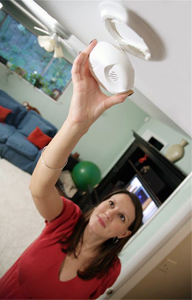 Many of us are thinking about Halloween today. But Daylight Saving Time also ends this weekend. While setting your clocks back, remember to replace your smoke alarm batteries and test to make sure they work properly.
Many of us are thinking about Halloween today. But Daylight Saving Time also ends this weekend. While setting your clocks back, remember to replace your smoke alarm batteries and test to make sure they work properly.
As we approach winter, we increase use of electrical appliances and the risk for home heating fires rise. In fact, half of all home heating fires happen in December, January and February. The death rate in homes with no working smoke alarms is twice as high as those with alarms, according to the National Fire Protection Association. Often, homes have smoke alarms but the batteries are missing disconnected or dead.
Make as many of these safety checks as you can this weekend:
Smoke alarms. Replace your smoke alarm batteries in every unit of your home and smoke alarms which are 10 years old. Also check if your smoke alarm model has been recalled. Kidde recalled 1.2 million smoke and carbon monoxide alarms in September. You can search for other recalls at www.cpsc.gov.
Carbon monoxide detectors. The state of Massachusetts began requiring carbon monoxide detectors in every residence in 2006 and many home owners have passed the 5-7 year lifespan of their models. Check if yours needs to be replaced. If you have a combination smoke alarm/carbon monoxide detector, check the unit’s specific instructions.
Washing machines and dryers. Clothes dryers are responsible for many home fires, but most can be prevented by regularly checking and cleaning the filters. Clean your models out now.
Cooking. Unattended cooking is the leading cause of cooking fires. Clear out any clutter in your kitchen now so you have plenty of room to set out your ingredients in advance. Find a cabinet or drawer to store anything you may need so you do not have to leave the room while cooking. Make sure you have a functioning fire extinguisher.
Home heating. Arrange for oil delivery or have your chimney or wood stove professionally cleaned. If you are using a space heater, take a few minutes to read our home heating safety tips. Each year, space heaters cause 80 percent of home heating fire deaths and one third of all home heating fires.
Get ready for the snow. Get your snow hat, gloves, shovel and road salt ready now and set them aside in the same place throughout the winter. When it snows, you want to be able to easily find them so you can clear your front steps and driveway so no one slips and falls in the snow and ice.
Cords. Walk through every room of your home and see what is plugged into the electrical outlets. Look under beds, behind computers, in power supplies and in your children’s rooms. Unplug cords you are not using and put them in a drawer until you need them. Pay extra attention to the USB cords for your tablets and cell phones and replace them if they look old or worn.
Get your car ready. Take a few precautions and reduce the stress of traveling in the snow. Collect and pack away ice scrapers and small shovels as well as an extra hat, pair of gloves and clothing in case you become stuck while traveling. Also pack a couple flashlights, a non-perishable snack, such as a granola bar, and make sure all your vehicle paperwork is easily accessible in the glove compartment.
Read More
Breakstone, White & Gluck Honored by Super Lawyers for 11th Year
We are pleased to announce our attorneys have been selected as Super Lawyers for 2014. This is the 11th year they have been recognized as among the best in Massachusetts and New England.
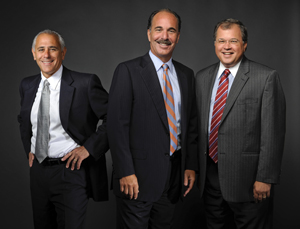
Our partners, Marc L. Breakstone, David W. White and Ronald E. Gluck, have been selected to various lists, including the Top 100 New England Super Lawyers, Top 100 Massachusetts Super Lawyers, New England Super Lawyers and Massachusetts Super Lawyers. Our associate, Samuel A. Segal, has been selected to Massachusetts Super Lawyers Rising Stars, for the second consecutive year.
Super Lawyers is a national rating service of outstanding lawyers from more than 70 practice areas who have attained a high-degree of peer recognition and professional achievement. The selection process includes independent research, peer nominations and peer evaluations. The top 5 percent of attorneys in each state are selected. The Super Lawyers list will be published in November’s edition of Boston Magazine.
Attorney Marc Breakstone was selected for the following 2014 Super Lawyers honors:
- Top 100 Massachusetts Super Lawyers
- Massachusetts Super Lawyers, Plaintiff’s Medical Malpractice
- New England Super Lawyers, Plaintiff’s Medical Malpractice
 Breakstone has also been named a Top 100 New England Super Lawyer four times, in 2009, 2011, 2012 and 2013. It is the eighth year he has been recognized to the Top 100 Massachusetts Super Lawyers and his 11th year as a Massachusetts and New England Super Lawyer in the category of plaintiff’s medical malpractice.
Breakstone has also been named a Top 100 New England Super Lawyer four times, in 2009, 2011, 2012 and 2013. It is the eighth year he has been recognized to the Top 100 Massachusetts Super Lawyers and his 11th year as a Massachusetts and New England Super Lawyer in the category of plaintiff’s medical malpractice.
Breakstone has established a reputation as one of the top medical malpractice and personal injury lawyers in Massachusetts and New England. For over 25 years, he has represented clients who have been seriously injured by negligence in cases involving wrongful death, construction accidents, gas explosions and transportation and truck accidents. He is a graduate of Northeastern University School of Law.
Attorney David W. White was selected for the following 2014 Super Lawyers honors:
- Top 100 New England Super Lawyers
- Top 100 Massachusetts Super Lawyers
- Massachusetts Super Lawyers, Personal Injury General Plaintiff
 White, a past president of the Massachusetts Bar Association, has been named to the Top 100 New England Super Lawyers list three times and the Top 100 Massachusetts Super Lawyers list six times. He has been recognized on the Massachusetts Super Lawyers list in the personal injury category for 11 years.
White, a past president of the Massachusetts Bar Association, has been named to the Top 100 New England Super Lawyers list three times and the Top 100 Massachusetts Super Lawyers list six times. He has been recognized on the Massachusetts Super Lawyers list in the personal injury category for 11 years.
White has practiced law in Boston for over 25 years and specializes in personal injury cases, representing clients seriously injured in bicycle accidents, car accidents, construction accidents and those injured in product liability and premises liability cases. He is a graduate of Northeastern University School of Law.
Attorney Ronald E. Gluck has been selected for the following 2014 Super Lawyers honors:
- Massachusetts Super Lawyers, Personal Injury General Plaintiff
- New England Super Lawyers, Personal Injury General Plaintiff
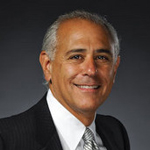 Gluck, who represented victims of the 9-11 attacks, has been selected to the Massachusetts Super Lawyers list for 10 years and New England Super Lawyers for 8 years. He has represented seriously injured clients for over 30 years in cases involving wrongful death, car and truck accidents, motorcycle accidents, liquor liability, premises liability and product liability. He is a graduate of Case Western Reserve University School of Law.
Gluck, who represented victims of the 9-11 attacks, has been selected to the Massachusetts Super Lawyers list for 10 years and New England Super Lawyers for 8 years. He has represented seriously injured clients for over 30 years in cases involving wrongful death, car and truck accidents, motorcycle accidents, liquor liability, premises liability and product liability. He is a graduate of Case Western Reserve University School of Law.
Attorney Samuel A. Segal has been selected for the following 2014 Super Lawyers honors:
- Massachusetts Super Lawyers Rising Stars for 2014
- Massachusetts Super Lawyers Rising Stars for 2013
 Segal handles personal injury cases in all areas of the firm’s practice, including medical malpractice, premises liability, car accidents and construction accident claims. He is a graduate of Northeastern University School of Law. The Rising Stars list recognizes the top 2.5 percent of lawyers in the state who are either 40 years old or younger or who have been in practice for 10 years or less.
Segal handles personal injury cases in all areas of the firm’s practice, including medical malpractice, premises liability, car accidents and construction accident claims. He is a graduate of Northeastern University School of Law. The Rising Stars list recognizes the top 2.5 percent of lawyers in the state who are either 40 years old or younger or who have been in practice for 10 years or less.
National Child Passenger Safety Week: Check for Child Seat Recalls This Year
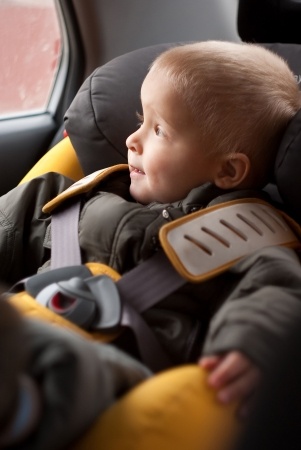 This is National Child Passenger Safety Week, when parents can get answers to common questions about driving safely with their children.
This is National Child Passenger Safety Week, when parents can get answers to common questions about driving safely with their children.
National Child Passenger Safety Week began last weekend and is observed by the National Highway Traffic Safety Administration (NHTSA) and local communities. It ends this weekend with National Seat Check Saturday.
Motor vehicle accidents are one of the leading causes of death for children in the United States. Child safety seats reduce the risk for injury if they are used properly, by more than 70 percent when it comes to infants and more than 50 percent for children age 1 to 4. But parents have long struggled with how to use them. In one study, more than 70 percent of 3,500 observed car and booster seats were misused in a way that could harm children, according to the Centers for Disease Control and Prevention (CDC).
Parents should also closely examine their child safety seat models this year. Several months ago, Graco recalled more than 6 million child safety seats, the largest car seat recall in U.S. history. Parents reported they were unable to unbuckle defective harnesses and had to cut their children out of the straps. The cause was food was getting dried up in the harnesses and causing them to stick.
Child passenger safety laws have changed over the past decade and every state now has a law for infants and children-fitting specific criteria. All but two (Florida and South Dakota) require booster seats for older children. The Massachusetts Child Passenger Safety Law requires children to ride in federally-approved child passenger safety seats that are properly secured until they are eight years old or over 57 inches tall.
Despite laws for older children, Safe Kids, a national non-profit organization, has released a new report, showing 7 in 10 parents did not know a child should be at least 57 inches or 4’9″ tall before they ride in a car without a booster seat. The organization surveyed 1,000 adults.
A few resources on child safety seats:
Check Your Car Seat Label. Become informed about the specifics of car seats. Make sure yours fits your child’s weight, size and age. For infants through age two, look for a rear-facing child safety seat. For children between ages 2 -4 or up to 40 pounds, choose a forward facing child safety seat. From age 4 to 8 or 57 inches, children should ride in belt positioning booster seats. Read more.
Car Safety Seat Checklist for Parents. Safe Kids has developed this checklist for parents.
Register Your Car Seat. Here is a resource from the NHTSA on registering your car seats with the manufacturer. This will allow the manufacturer to contact you if there is a defect.
Used Car Seat Safety Checklist. Here is a resource from the NHTSA on using used child safety seats.
Community Events. Some organizations offer free car seat safety inspections this weekend as part of National Seat Check Saturday and allow parents to make appointments with trained professionals throughout the year. Here is a directory of locations or you can contact your local police department to ask about resources in your community.
Read More
Pool Safety Starts with Your Pool Fence
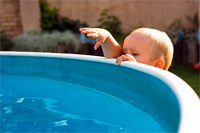
As a pool owner, you have a responsibility to secure your pool with a strong, adequate fence. Many property owners do so because it is the law and to prevent neighborhood children or trespassers from breaking in. But they may have a false security when it comes to friends, families and young children they invite over.
Many pool accidents and drownings actually involve invited guests, people we may know well and have over regularly. Let them enjoy your home, but block unrestricted and unsupervised access to your pool.
The Consumer Product Safety Commission (CPSC) conducted a survey of swimming pool accidents in Arizona, California and Florida. Data showed drowning was the leading cause of accidental death in and around the home for children under age 5. Most of these children – 75 percent – were between 1 and 3 years old.
Fewer than two percent of pool accidents resulted from children trespassing on the property. More often, children knew the pool owner, with 65 percent of accidents occurring in pools owned by an immediate family member. Another 33 percent happened in pools owned by relatives and friends.
More telling is what happened before these accidents:
- Most of the children were being supervised by at least one parent when they drowned
- Nearly half of the children were last seen in the house before the pool accident occurred
- Another 23 percent were last seen on the porch or patio, or in the yard
- Some 77 percent of children had been missing for 5 minutes or less when they were found
Adding an extra layer of fencing may make a difference in preventing these accidents.
Pool Fence Recommendations
- Self-Closing. A pool fence should be self-closing and self-latching. It should open from the pool side and should be maintained so it can easily latch.
- Fence Height. A pool fence should be at least four feet tall and four feet above the grade of the ground outside the fence.
- Release Mechanism. You want to prevent children from reaching the latch. When the release mechanism is less than 54 inches above the grade, the release mechanism for the gate should be at least 3 inches below the top of the gate and installed on the side facing the pool. Also, make sure there is no opening greater than ½ inch within 18 inches of the latch release mechanism.
- Bottom of the Fence. If your fence stands on a concrete surface, the clearance between the bottom of the fence and the ground should not exceed four inches. For fences on softer surfaces, such as grass, the maximum clearance is two inches.
- Fence Spacing. The space between the vertical fence slats should not exceed four inches.
- Chain Link Fences. For chain-link fences, the diamond-shaped openings should be no larger than 1 ¾ inches.
- Decorative Fences. Fencing with decorative openings should follow the same standard as chain link fences and not exceed 1 ¾ inch.
- Backyard Doors. Massachusetts requires pool alarms when doors from a home open into a pool enclosure area. For instance, if there are three sides of fencing around the pool and the home serves as the fourth side.
- Pool Alarms. Purchase a pool alarm even if you are not required to by law. Pool drownings happen quickly and often silently. A pool alarm interrupts that process and provides you warning if someone is entering the gate.
- Above Ground Pools. For above ground pools, build a fence on top of the structure as a barrier. Remove or lock the pool ladder when not in use. For another layer of protection, you can also add a fencing structure around the ladder and lock that when not in use.
- Pool Covers. Consider a power pool safety cover to add another layer of protection. Purchase one which conforms to the specifications in ASTMF 1346-91.
Related:
Safety Barrier Guidelines for Home Pools, Consumer Product Safety Commission
About Breakstone, White & Gluck
Our Boston personal injury lawyers have over 100 years combined experience handling personal injury and premises liability claims, including swimming pool accidents. If you or a family member has been injured, it is important to learn your rights. For a free legal consultation, contact us at 800-379-1244 or 617-723-7676 or use our contact form.
22 Years and Counting!
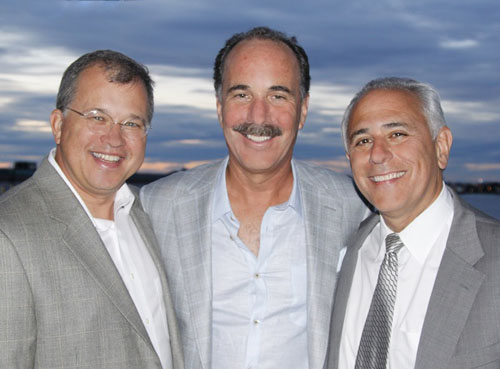
Founded in May 1992, Breakstone, White & Gluck celebrates its 22nd anniversary this week. Our law firm has been guided by a commitment to provide consistently excellent representation to individuals and families who have been seriously harmed by the negligence of others. We feel honored to help our clients not only obtain full and fair financial compensation, but also the best possible medical and personal end-results. We are grateful to the innumerable referring attorneys who have entrusted their clients’ cases to us. We are thankful to our own families for their love and support. We look forward to continuing to serve our community and our clients in the future. Thank you.
Use Space Heaters and Home Heating Equipment Safely
Home heating equipment is the second leading cause of home fires in Massachusetts. Because half of all home heating fires occur in December, January and February, now is the time to consider if you are heating your home safely.
The most important step is to make sure your smoke alarm has working batteries. Also, have your home heating equipment checked and serviced by a qualified professional each year. They can identify problems and clear any debris in your chimney or vents. Any obstruction increases the chance of fire and can lead to carbon monoxide poisoning, which can be fatal. Other ways to protect your family and home:
Space Heaters
Space heaters cause 33 percent of all home heating fires and 81 percent of home heating fire deaths, according to National Fire Protection Association (NFPA). If you have an older model, consider purchasing a new one with an automatic shut-off feature. Also, search for your model on the Internet to make sure it has not been recalled. The best resource is the Consumer Product Safety Commission website.
Use space heaters on even surfaces and always keep them three feet away from combustibles, such as bed spreads and clothing. Also keep children and pets at least this far away.
Do not use an extension cord and use space heaters on a flat surface where they will not tip over. Remember to turn it off before you go to sleep or if you leave the room.
No Overloaded Electrical Outlets
Be careful not to overload electrical outlets. Space heaters draw a large amount of electricity. Shift around appliances if you think you may be overloading an outlet.
Keep Vents Clear
Monitor your indoor and outdoor heating vents throughout the winter. When it snows, clear your outside heating vents even before you shovel your driveway.
Wood, Coal and Pellet Stoves
In Massachusetts, you need a building permit to install wood, pellet or coal burning stoves and fireplaces. They must be inspected by a local building inspector prior to use.
Last year, there were over 800 fire incidents in Massachusetts involving chimneys, fireplaces and woodstoves. Many result from a build-up of creosote, a by-product of burning wood.
Read the manufacturer’s instructions on how to use your heating equipment. Do not use flammable liquids to start a fire. For fireplaces, check that the damper is open before starting a fire so there is not a build-up of smoke and carbon monoxide.
Use the fireplace screen to prevent flames and sparks from moving outside the fireplace and causing burns and injuries. Do not close the damper until the fire is fully out.
When finished, dispose of ashes in a metal ash can and keep it outside your home and garage. Also keep it away from porches and decks.
Cooking
Make sure you have proper ventilation before you start cooking. Do not use grills inside your home.
Related:
Heating fire safety: Wood Stoves, Space Heaters and Fireplaces, U.S. Fire Administration.
Read More
Tips for Buying Safe Toys This Holiday
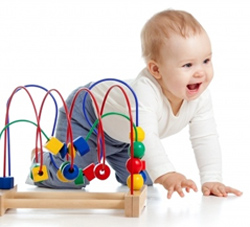 Many of us worry about buying unsafe toys during the holiday season. This concern has merit. In 2011 alone, more than 262,000 toy-related injuries were reported and another 13 children were killed while playing with dangerous toys, according to the Consumer Product Safety Commission (CPSC). This year, the CPSC reports toy recalls are down, but toy-related injuries have risen.
Many of us worry about buying unsafe toys during the holiday season. This concern has merit. In 2011 alone, more than 262,000 toy-related injuries were reported and another 13 children were killed while playing with dangerous toys, according to the Consumer Product Safety Commission (CPSC). This year, the CPSC reports toy recalls are down, but toy-related injuries have risen.
What to remember when you shop:
Choose Age-Appropriate Toys. Toys should have labels explaining age recommendations and other important warnings, such as “Flame retardant/Flame resistant.” The CPSC recommends avoiding toys with small pieces for children under age 3. They pose a choking hazard. For older children, avoid playsets with small magnets and balloons.
Buying Toys Online. Read instructions for use carefully. If you are buying from Amazon or eBay, remember those websites are only shopping forums. Take note of which company is selling the product.
Sharp Pieces.Toys designed for children under 8 years of age should not have sharp glass or metal edges.
Shattered Pieces. Set aside any toy that looks like it could easily shatter into small pieces and cause choking, cuts or other serious personal injuries.
Magnets.Toys with small magnets are dangerous to children. When children swallow one or more, the magnets can pull together and cause internal injuries, resulting in vomiting, abdominal pain and infection. In the past few years, children have suffered serious injuries and even death. In response, the CPSC has started a Magnets Information Center.
Loud Noises.Toy guns, tablets and talking dolls can damage a child’s hearing over time if used too closely.
Cords and Strings. Toys with long cords and strings can cause strangulation. Carefully consider this before you buy crib gyms, baby mobiles and swings. If a child can reach a baby mobile, it should be removed.
Batteries. Make sure an adult, not a child oversees battery charging for any toys or electronics. Avoid toys with small button-cell batteries, which can be easily swallowed and cause burning, esophagus pain and vomiting among other symptoms. Also be aware of other appliances, such as remote controls, which use these small batteries.
Sports Equipment. When you buy a sports-related toy, make sure you also buy the safety equipment, such as bike helmets for bikes. Children are required to wear bike helmets in Massachusetts until age 16 and if an accident were to occur, they are an important tool for preventing a lifelong head injury.
Related:
Holiday Toy Safety, Consumer Product Safety Commission.
Tiny Batteries Causing Big Health Problems for Kids, ABC News.
Read More
Massachusetts Boating Accidents Increased in 2012
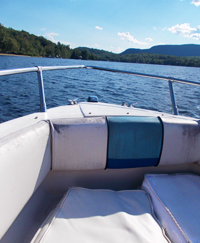
For Massachusetts boaters, a day on the water resulted in more injuries last year, according to state figures.
In 2012, Massachusetts saw 68 reported boating accidents, resulting in 17 deaths, according to the state Executive Office of Energy and Environmental Affairs. This was an increase from 2011, when there were 46 reported boating accidents and 9 deaths.
Nationally, there was a significant decrease in reported accidents. In 2012, 651 boating accidents were reported, down from 758 in 2011, according to the U.S. Coast Guard.
Massachusetts Environmental Police enforce the state’s boating laws and investigate recreational boat accidents on coastal and inland waters, except private lakes and ponds and those smaller than 10 acres. If you are in a boating accident involving personal injury, death or property damage over $500, you are required to report it.
Our Boston injury attorneys offer these safety tips for boating off Boston Harbor, Cape Cod or your favorite spot:
Wear life jackets. Many drownings and accidents result from failure to wear life jackets or not having appropriate life jackets onboard. In Massachusetts, children under 12 are required to wear life jackets on boats at all times and boats must have one life jacket on board for every passenger.
Life jackets are required for users of personal watercraft, such as Jet Skis.
Avoid alcohol. Avoid alcohol consumption while operating a boat. Alcohol use is involved in up to half of teen and adult deaths associated with water recreation, according to the Centers for Disease Control & Prevention.
Operating a boat under the influence is against the law in every state in the United States. In Massachusetts, the criminal punishment can include imprisonment, fines and a loss of motor vehicle license and boating registration for one year. If a boater causes serious bodily injury to another person, they may be imprisoned for up to 10 years and fined up to $5,000.
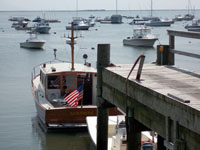
Training. The state’s Boat and Recreation Vehicle Safety Bureau offers training, which is mandatory for younger boaters but available to others as well.
Avoid swimming areas. In Massachusetts, boaters are prohibited from operating within 150 feet of shorelines used as swimming areas. You must stay more than 75 feet away from floats and markers that line designated swimming areas.
Beware of other boaters. Travel the permitted speed (generally 45 miles per hour on inland waters) and slow down as you approach other boaters. Your boat’s wake can cause another boat operator to lose control or injure the passengers.
Traveling with passengers. Do not exceed your boat’s passenger limit. Ask all your passengers to wear life jackets, especially young children. When you refuel your boat, ask your passengers to step off the boat. Make sure you have the right amount of food and water.
If you are traveling with children, explain the safe areas to sit, how to properly board the boat and what they cannot touch.
Aging or broken boat equipment. Before each season, have your boat checked for equipment failures. The Coast Guard offers free vessel checks or you ask your local boatyard. You can also check the government boat recall database.
Boating at night. It is best to boat during daylight, but if you go at night, make sure you have the proper navigation lights and limit your passengers so you can focus on operating the boat.
*********
Related:
State Environmental Officials Urge Residents to Follow Safe Boating Practices, Executive Office of Energy and Environmental Affairs.
Massachusetts Boating Law Summary, Executive Office of Energy and Environmental Affairs.

